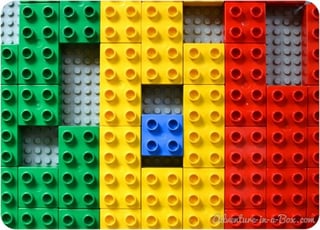
How LEGO and FieldConnect Changed the World
In the days before electricity, Billund was an obscure Danish village, and Ole Kirk Christiansen was just a simple carpenter with ambition. As a young man, Christiansen turned his love of whittling and playing with wood into a business and, in 1916, he opened his own shop.
While initially producing furniture like ladders, stools, and ironing boards, Christiansen’s love of toys is what drove the company forward. As toys became a bigger part of his business, he even renamed the company to reflect its new direction: leg godt, or “play well,” became LEGO.
Ole Kirk died in 1952, just as his son was on the verge of transforming the simple Automatic Binding Bricks into a full-blown “System of Play.” Designed on the principle that all blocks should interlock and be interrelated, the system became the foundation of modern-day LEGO. That means that any LEGO block produced since 1955 can interlock with any other.
Software & Hardware Technology

If all of the software and hardware technology that businesses use today came from the same source, it would fit together as easily and seamlessly as LEGO bricks do. But they don’t. We’ve tried to overcome that challenge through the adoption of industry standards, but the failure of that effort for many applications is encapsulated in this quote from a technology analyst a number of years ago (wish I could provide proper attribution). He said, “The beauty of industry standards is that there are so many of them!”
Technology companies have introduced a flurry of integration “brokers” over the years, and they, too, have failed to provide the kind of straightforward integration that companies could really consider agnostic. The latest wave of integration strategies has revolved around integration platforms and integration as a service. While these approaches have simplified integration to a certain extent, it can often feel like you’re mixing your erector set with some Lincoln logs and things just don’t line up. And when things do break, it can be impossible to fully understand and manipulate what might be inside the black box of an integration platform.
FieldConnect’s Approach
At FieldConnect, our approach has been more aligned with Christiansen’s LEGO concept. If you imagine all the “components” of a typical LEGO set, you may recall the seemingly boring, flat, gray piece. While unassuming in a stand-alone scenario, this gray piece provides the foundation to build upon, assuming that the pieces are compatible. Soon, the gray piece has walls, towers, and defined spaces built upon it in yellow, blue, red and green. No matter the size, shape, and color of the blocks on top of the foundation, they all fit, because they were made that way. We like to think of ourselves as the flat, gray piece. Maybe a bit boring, at first, but as you combine the building blocks of our solution, and start integrating them with blocks from other solutions that your business uses, the real fun begins.
But how did we make the other pieces fit so well with our gray one? We simply figured out what the various pieces of a complete solution looked like, and made our foundation in a way that would make sure they all fit. We found that the best way to ensure this fit was to integrate the system at the data and process levels. So, we don’t integrate with the data, but rather just use the data that is available to us, because we have architected our field solution so that it can read and write directly to the database.
Let’s look at how we work in a Microsoft environment, as an example. Microsoft has many components that can be brought to bear in a field service management scenario. We have created the FieldConnect so integrate seamlessly into this environment. Essentially, we looked at how Microsoft has designed and built their yellow, blue, red, and green blocks and then designed our gray foundation to make sure their blocks will snap onto our base.
Increasing Collaboration & Improving Business Processes

So, while we have the field service piece covered, how can we increase collaboration? Let’s snap the yellow brick from Microsoft Teams onto that gray, flat one. How about managing business processes? The red Flo brick will fit nicely. Our executives need dashboards to know how the business is doing relative to key performance indicators. The blue brick from Power BI has a spot on the base. You can even add the green brick from Microsoft Office to integrate the traditional productivity applications into the overall system.
While this may be a simplistic view of software integration, do not underestimate the power of a system that integrates in a manner similar to the LEGO example above. This approach can enable tight integration and the ability to grow while leveraging the power of interoperability to accomplish amazing things. Just to complete the analogy, we leave you with this:
Yes, that is a full-size Bugatti Chiron supercar made entirely from LEGO bricks. Proof that an integrated, modular approach can yield amazing results!